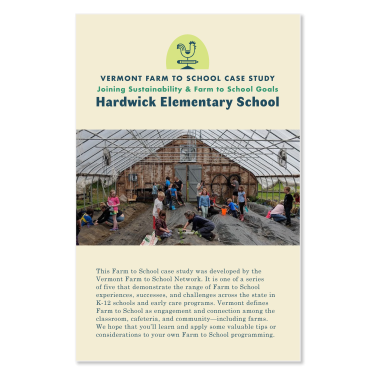What's Happening with the Farm to School Movement in Vermont?

A 2017 survey indicated that more than half of the state’s K-12 schools are integrating Farm to School programming into their cafeterias, classrooms, and communities! Especially in Vermont, schools are part of an interconnected system involving children, families, businesses, farms, distributors, and the broader community. Farm to School is not an add-on, but a mechanism for achieving school goals while improving the health and wellness of students, schools, and communities. This case study serves as tangible inspiration in recognizing there is not only one path to integrating a farm to school program at a school or early care site.
Hardwick Elementary School sits in a town of just under 3,000 residents, which is often referred to as the “Gateway to the Northeast Kingdom.” Steeped in a rural community culture and agrarian heritage, it is also at the heart of Vermont’s local food renaissance. The elementary school sits downtown with little outdoor space of its own, but has a strong commitment to Farm to School; education for sustainability; place-based, experiential learning; and collaboration with farmers, businesses, local organizations, and parents. This 15-year-old program persists through changes in staff and administration because of strong community support. Experienced teachers help build the team by collaborating with new teachers who may be hesitant to start new programming. There is no pressure to participate, but rather a warm invitation and a “meet them where they are” mentality.
This series of case studies is a project of the Vermont Farm to School Network, University of Vermont Extension, and Vermont FEED.
We invite you to read the full report below, and/or download the report by filling out the fields further below.